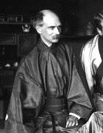X
Please wait for the PDF.
The browser will either open the file, download it, or display a dialog.
The browser will either open the file, download it, or display a dialog.

Five papers from a recent symposium at the Van Gogh Museum in Amsterdam elucidate the international influence of Siegfried Bing on the visual arts. From his Paris-based shop, the dealer promoted a new design reform movement that took the name of Art Nouveau.
The creation of Edouard Vuillard's most celebrated decoration, The Public Gardens (1894), provoked a major crisis in the artist's search for unity in multi-paneled decorative ensembles. In conceiving The Public Gardens, Vuillard rejected several completed panels before discovering an early seventeenth-century Japanese screen that inspired a solution to his pictorial dilemma.
This article explores the Dutch quest for a national style of home décor around 1900, and considers the ways in which Siegfried Bing's shop, "L'Art Nouveau," was an important example for the Dutch gallery, "Arts and Crafts."
Beginning in 1894, S. Bing became the sole European representative of Louis C. Tiffany's favrile glass and over the course of the next decade was extremely successful in selling and distributing these wares in several countries. Tiffany, in turn, was influenced by aspects of the Art Nouveau style promulgated by Bing. Studied together, their relationship reveals a great deal about avant-garde design at the turn of the century.
This essay explores how "functional prints" by Henry Somm, including his Fantaisies Japonaises (ca. 1879), helped define women as consumers of Japanese art objects marketed by Siegfried Bing.
Using the many advertising images placed by Siegfried Bing and Julius Meier-Graefe in the daily and art press of the time, this article examines the merchandising techniques both men used to publicize their art nouveau businesses. In Bing's case, these techniques were similar to those he used for his Asian art business.







